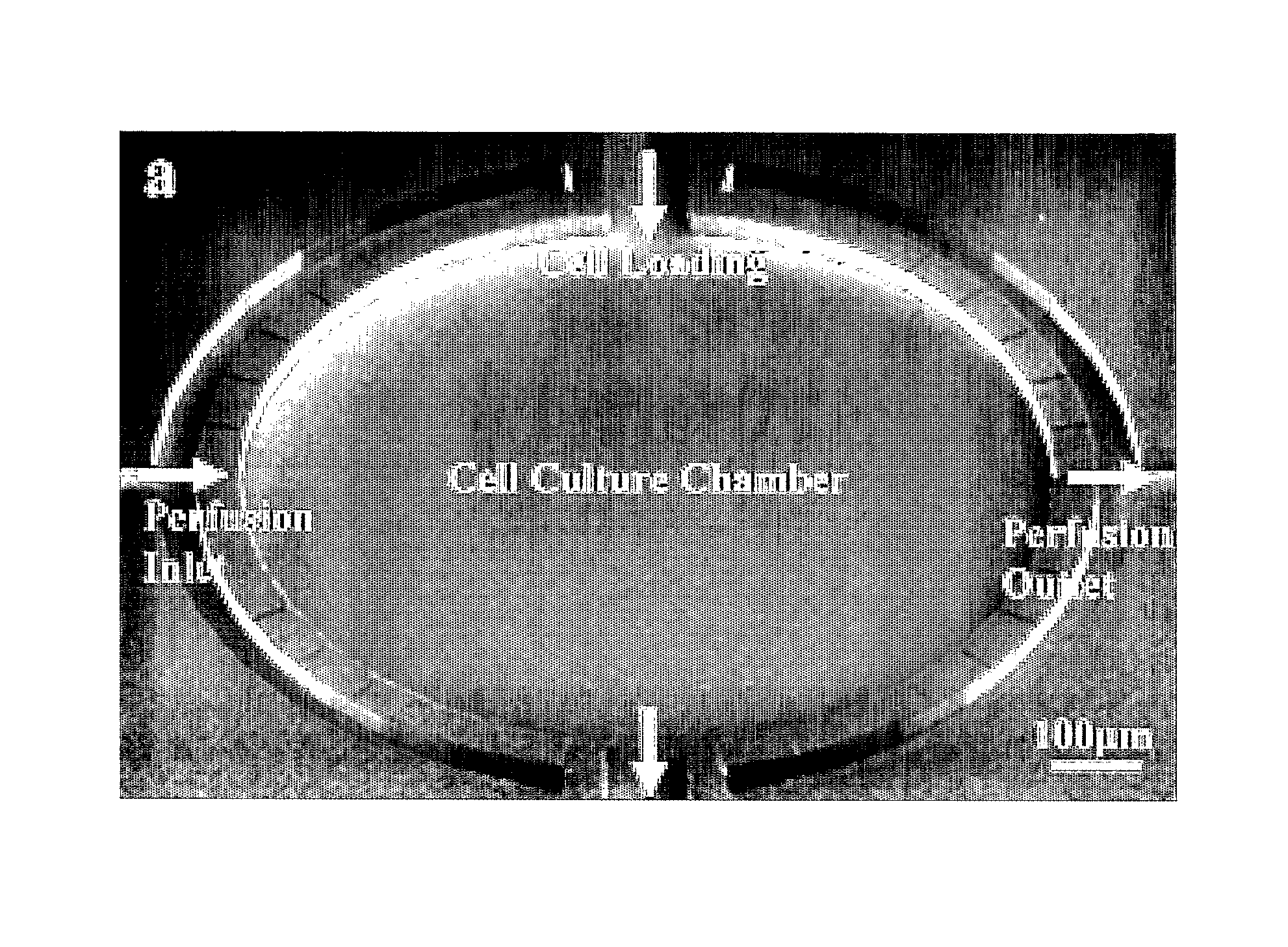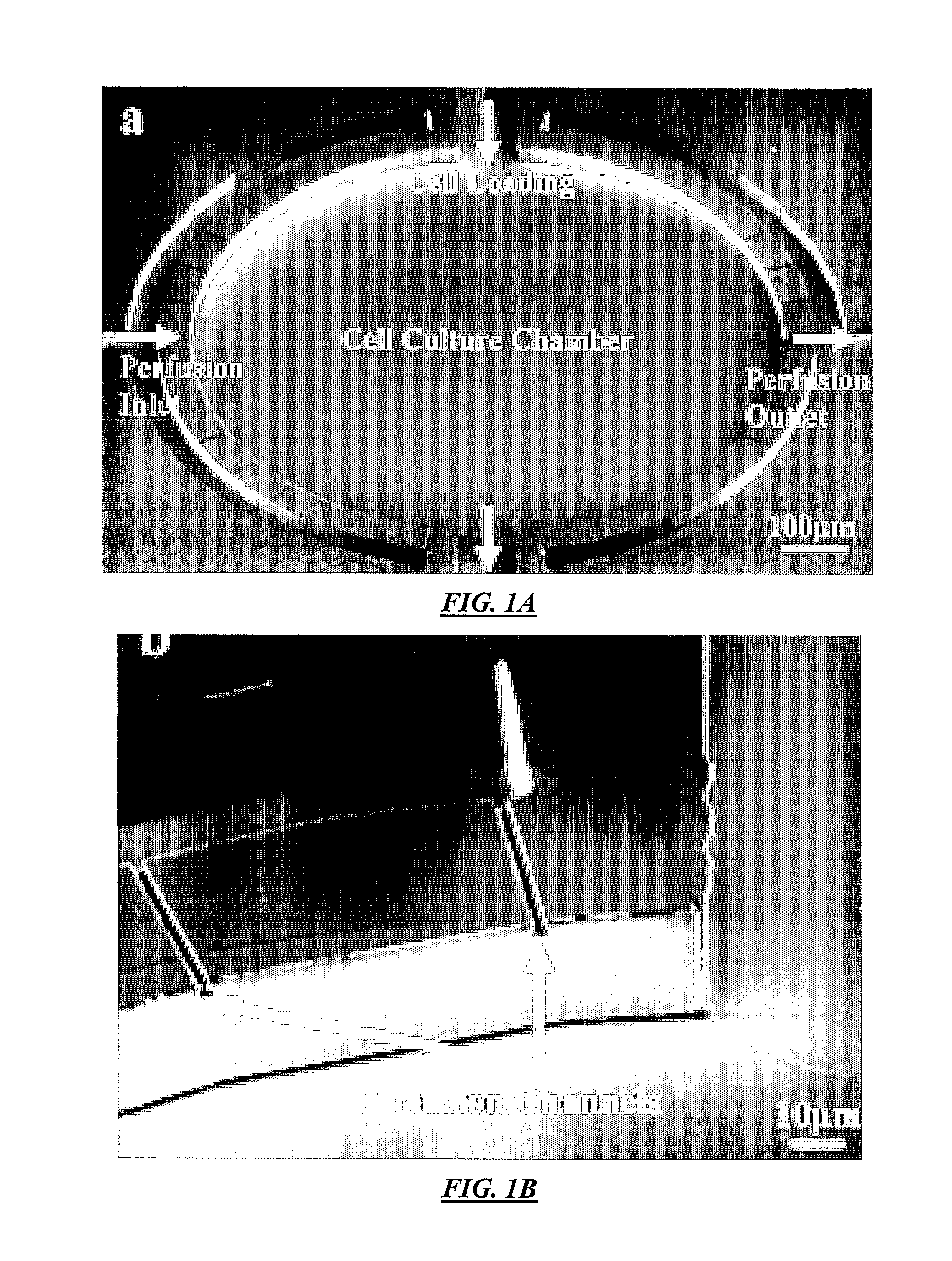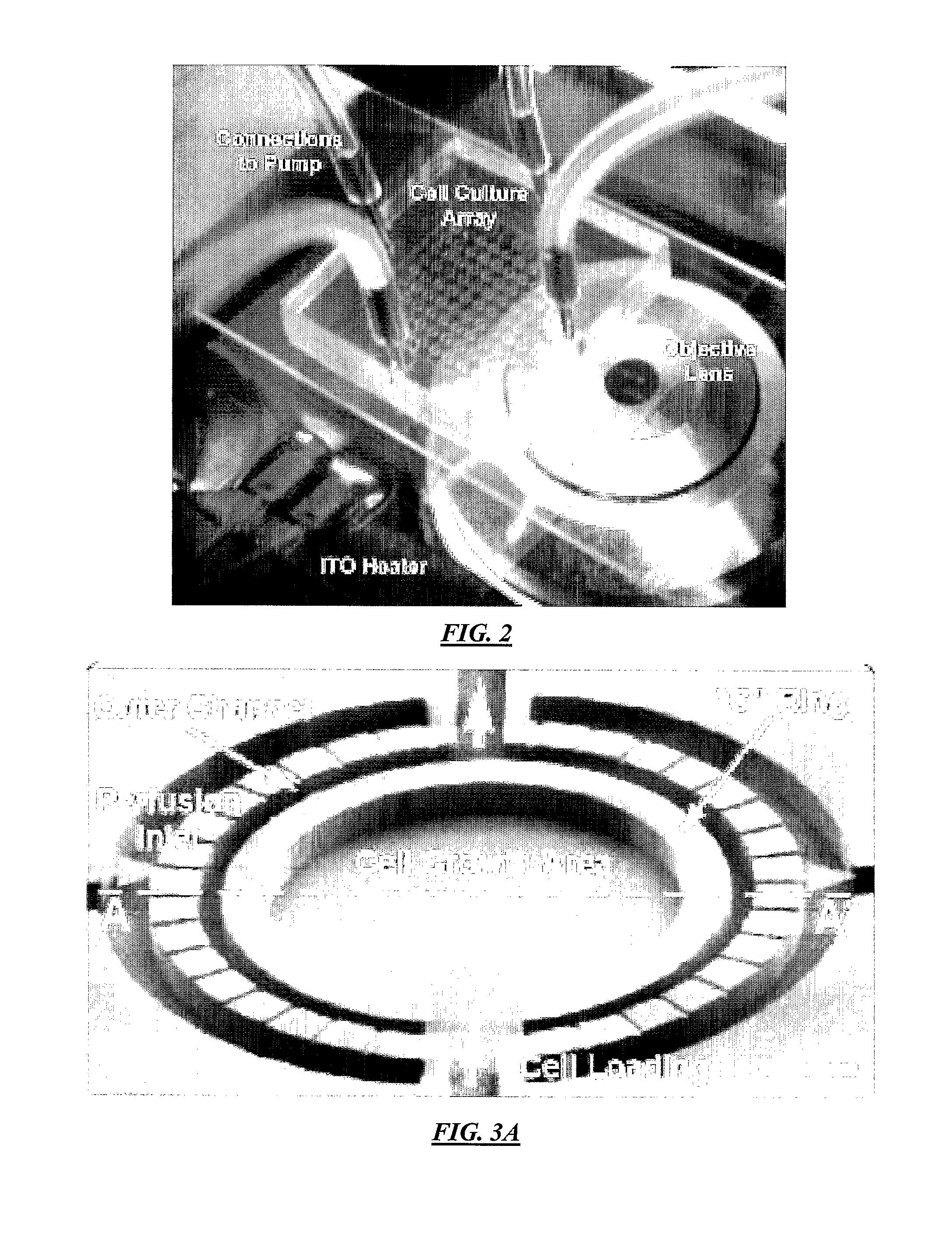Methods and apparatus for cell culture array
a cell culture array and array technology, applied in the field of molecular and cellular sample preparation and/or culturing and/or analysis, can solve the problems of inability to address the cellular length scale, labor/resource intensive current practices, and inability to process control, etc., to achieve more uniform diffusion, easy manufacturing, and high fluidic resistance
- Summary
- Abstract
- Description
- Claims
- Application Information
AI Technical Summary
Benefits of technology
Problems solved by technology
Method used
Image
Examples
example device
Configurations
2. Example 1
example experimental
Chamber
[0111]FIG. 1A illustrates a top view of an example cell culture device according to specific embodiments of the invention. This example has four ports: perfusion inlet, perfusion outlet, reagent loading, and waste, with the perfusion flow directed designated from left to right in the figure and reagent loading from top to bottom in the figure. As can be seen in the figure, the perfusion flow channels are separated from the main chamber by semi-circle-shaped perfusion channels at both the inlet (left) side and the outlet (right) side. Fluidic connection between these semi-circle-shaped channels and the culture chamber is made by the multiple high aspect ratio perfusion channels shown in the figure, which are approximately 1 / 10 to 1 / 50 the depth of the main channels and / or culture chamber. To prevent cells from flushing away during perfusion, approximately 2 μm height perfusion channels connect the perfusion inlets and outlets to the culture chamber. Because cells (typically >1...
example 2
3. Example 2
[0118]A further example nanoliter scale fluidically addressable microfluidic platform according to specific embodiments of the invention is described below. In a specific example, an addressable 6×6 array of eight nanoliter chambers is effective for long term continuous culture of the HeLa human cancer cell line with a functional assay of 36 different cellular microenvironments. In one optional construction. high aspect ratio soft lithography is used to create the high fluidic flow channels, though further study has shown that the same high fluidic resistance can be achieved using a diffusion structures with diffusion passages that have the same height a the main chamber and medium channels. In this example to further separate individual culture units from flow channels by a “C” shaped ring with a narrow gap along the base to effectively decouple cell growth regions from pressure-driven transport without the use of active valves. This design avoids problems encountered i...
PUM
| Property | Measurement | Unit |
|---|---|---|
| height | aaaaa | aaaaa |
| diameter | aaaaa | aaaaa |
| height | aaaaa | aaaaa |
Abstract
Description
Claims
Application Information
 Login to View More
Login to View More - R&D
- Intellectual Property
- Life Sciences
- Materials
- Tech Scout
- Unparalleled Data Quality
- Higher Quality Content
- 60% Fewer Hallucinations
Browse by: Latest US Patents, China's latest patents, Technical Efficacy Thesaurus, Application Domain, Technology Topic, Popular Technical Reports.
© 2025 PatSnap. All rights reserved.Legal|Privacy policy|Modern Slavery Act Transparency Statement|Sitemap|About US| Contact US: help@patsnap.com



